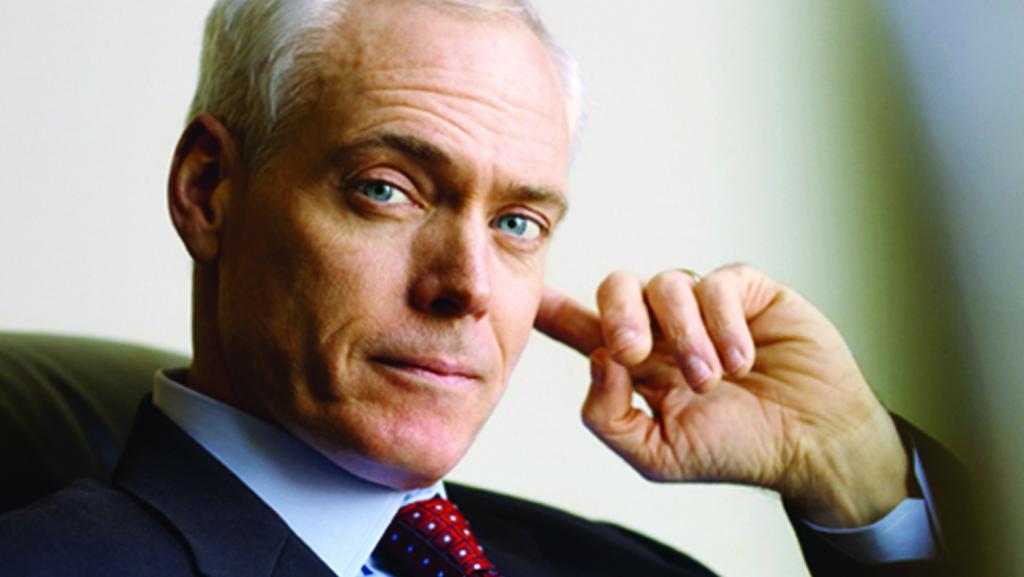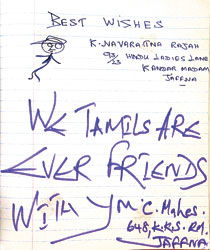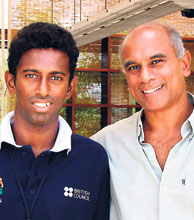I grew up in
Toronto in the 1970s and 80s when there seemed a kinder gentler politics
around. I had met Conservative Premier
of Ontario, Bill Davis a few times and I campaigned for
Attorney General Roy McMurtry in his Eglinton
riding in the early 80s. I supported
them for their positive policies in the 70s and 80s on inclusive race relations and
their genuine efforts to make newcomers – the visible minorities welcome to
Ontario at a time fraught with racial prejudice for South Asians – the “Paki
bashing”I experienced on the streets.
I had just turned fifteen in April 1974 and it was the day after moving to an apartment on Parkwoods Village Drive
in Don Mills. At the end of the first day of my new school, Donview Heights
Junior High, I took a walk exploring the area at dusk towards Parkway
Plaza. I did not think much of the three boys who were walking towards
me and suddenly I was on the
ground being punched and kicked and for the first time to hear “Paki go
home”.
I was
confused, scared and angry, did not know what they meant to call me 'Paki' at the
time. I stumbled to our apartment
building bruised and battered, sat on the stairwell crying not wanting to
show my face to my parents, yet I had to relent and go in. When my mother asked me, I said I fell down
the stairs and knew she did not believe me.
The next day
in school, a new friend, Dominic Cursio asked what happened and I inquired what Paki meant and he replied, “That is a bad word for you guys". He educated me on
similar derogatory words for Africans, Italians and instructed - “Don’t take
it man - fight back”.
I did fight
back, as on another day walking along a hallway, a youth lined to
enter a class called me 'Paki'. I reacted
with a body slam onto the lockers and as the startled boy fell to the ground
the teacher ran out to grab me and said, “That’s it, you are going to the
Principal”. As we were about to enter the
office I managed to tell him, “That guy called me a Paki” and he immediately
turned around to walk me back to the boy and asked him to apologize to me.
Imagine my surprise!
I realized then that this teacher had no issue with my colour, along with other teachers,
administrators and most of the schoolmates I encountered.
There were the blatant few who did make me feel vulnerable. Soon I learned that they were cowards, as
whenever I challenged them, most retreated, except on the few occasions where
I had to fight and on another - running was the best option rather than fight four.
In the fall of 1979 - I took on three youth at Eglinton and Weston Road about 11 pm after I got off my job at Queensbury Arms restaurant. That time I was saved by an Italian Pizza delivery person when he stopped his FIAT on the middle of the road, and another good Samaritan who gave me a ride to the Eglinton Subway - giving me reason to be optimistic about Canada.
In the fall of 1979 - I took on three youth at Eglinton and Weston Road about 11 pm after I got off my job at Queensbury Arms restaurant. That time I was saved by an Italian Pizza delivery person when he stopped his FIAT on the middle of the road, and another good Samaritan who gave me a ride to the Eglinton Subway - giving me reason to be optimistic about Canada.
A Culture and a System
that Honours Diversity
Through this tumultuous time I learned that
the average Canadian was inherently open to welcome a stranger. Perhaps, this can be attributed to John Ralston Saul's assertion in his book A Fair Country that Canada's Aboriginal culture to welcome, accommodate and include strangers to the circle is embedded in the Canadian psyche.
I also realized that there has to be policies and laws to protect us from the mean and prejudiced few. The most difficult kind of prejudice to deal with would be institutional and covert in nature – be it from an employer, a landlord or even an officer of the law.
I also realized that there has to be policies and laws to protect us from the mean and prejudiced few. The most difficult kind of prejudice to deal with would be institutional and covert in nature – be it from an employer, a landlord or even an officer of the law.
The Ontario government initiatives gave me
comfort that, even if the streets were unsafe at times, a process and a system was being institutionalized to deal with discrimination.
These initiatives showed how Canada, in the
1970s and 80s, was truly setting the stage as a multicultural, plural nation. As I was politically interested and engaged,
I began to learn about the pioneering race relations efforts of the Ontario
government led by Conservative Premier Bill Davis.
Around this time Toronto was shamed when
Shamsudin Kanji, a Tanzanian-Indian immigrant was assaulted at a subway station
by two white youth and thrown onto the tracks. He committed suicide in hospital
after both his legs were amputated.
 |
| With Mayor Gus Harris Scarborough Civic Center 1983 |
Meeting the Pioneers - Bill Davis and Roy McMurtry
I met Premier Bill Davis when I was a
volunteer cameraman with my father and a friend, Razvi Azeez around 1980 at Scarborough Cable
TV for a talk show - People
Participation hosted by South Asian host of Pakistani origin, Sydney
Zaidi.
Premier Davis made a lasting impression on
me as I had an opportunity to chat with him after recording the
interview. I remember his genuine
curiosity and interest about where I was from, what I was doing and planning for
the future. His gentleness, humility and
disarming smile was a pleasant surprise and I realized that my colour did not make
an iota of difference to him.
 |
| Meeting Premier Bill Davis for tea at Queens Park 1981 (L-R) myself, Jasvir Soor,The Premier, Sydney Zaidi, Jim Ball |
I got to know Roy McMurtry similarly through
the talk show and realized he was a decent man too and as Attorney General he made
race relations his priority, especially as the South Asian community was
increasing many fold with the influx of East African Indians.
 |
| Hon. Roy McMurtry - <Wikipedia> |
His efforts got the Court of Appeal to agree that any
assault that was motivated by racism should be treated more severely in
sentencing.
I remember our family friend and Crown Prosecutor, Kingsley Wijesinha, telling me a story when he sought and won a conviction for assault. The accused called him a Paki as he was escorted from the courtroom. The Judge who heard this called him back and added another year to his jail sentence. Later the Criminal Code of Canada was amended to reflect this principle.
I remember our family friend and Crown Prosecutor, Kingsley Wijesinha, telling me a story when he sought and won a conviction for assault. The accused called him a Paki as he was escorted from the courtroom. The Judge who heard this called him back and added another year to his jail sentence. Later the Criminal Code of Canada was amended to reflect this principle.
McMurtry also persuaded the Ontario cabinet to issue an
official policy statement on race relations from the government of Ontario. The
policy statement was developed and displayed in thousands of public places,
including classrooms throughout the province.
Electioneering
Being aware of these efforts, I decided to
canvass for McMurtry with a few friends in his Eglinton riding for the March
1981 elections. I spent a few days
walking door to door, dropping leaflets and speaking to surprised people.
Many were intrigued by a visible minority being active in the community and politics, at a time when it was rare. The positive interactions informed me more about this inherent Canadian nature of acceptance.
Many were intrigued by a visible minority being active in the community and politics, at a time when it was rare. The positive interactions informed me more about this inherent Canadian nature of acceptance.
I remember the joyful victory
night with beer flowing, music, dancing and Mr. McMurtry being genuinely
grateful for our participation. I felt
it well deserved for a decent man who worked hard to make life better for us in
Canada.
In an address titled Investing in Our Diversity at the
Urban Alliance
in Toronto, on April 19th 2007, the Hon Roy McMurtry,
as Chief Justice of Ontario said;
My
many years as a lawyer, Attorney General, and as Chief Justice of Ontario, have
made plain for me this palpable truth: the law alone is not enough to protect
those who are of different colour, or those who
profess a different religion. The law will never be enough, by itself, because
there is no legislature in the world capable of legislating ultimate
principles.
You
cannot legislate to what degree a man must love his neighbour, nor even that he
must not hate him. It is, I think, true of tolerance as it is of liberty, that,
in the words of justice learned first hand: “...it lies in the hearts of men and
women; when it dies there, no constitution, no court, no law can save it; no
constitution, no court, no law can even do much to help it; but while it is
alive, it needs no constitution, no court and no law to save it”.
Well said, Mr. McMurtry - that conditioning to be kind, open and accepting humans has to begin with parenting, schools and media.
Yet I knew the importance of setting a standard with legislation as a deterrent, as there is always recourse.
I did realize that I had to take responsibility too. As
much as I appreciated the laws being there, I knew as a newcomer, I had to reach out too - to
engage, communicate and educate people - take away the fears of a stranger, to build friendships, trust and community, as it is a matter of the heart and mind and it is a two way street.
This
meant being patient with people who mispronounced my name or thought we all lived in mud huts in Sri Lanka or were surprised I spoke English or knew the same songs, had a car or played
Rugby back there. I realized that reaching out, being open
and patient led to good relationships and people opened up and invited us to their homes too, as we opened ours.
While the Canadian welcome complemented by far reaching policies and laws has created a vibrant and a colorful urban Canadian landscape, I do lament and am concerned about so many distinct people in cities like Toronto, Montreal and Vancouver becoming separated and polarized in language, religious and ethnic based schools and communities.
When these Canadians miss opportunities to interact and learn about each other to become comfortable with the rich diversity of their neighbours, fissures in the multicultural and plural foundation of Canada may appear. It is our collective responsibility to ensure that the original intent of these policies and laws are nurtured and perpetuated for unity and harmony.
While the Canadian welcome complemented by far reaching policies and laws has created a vibrant and a colorful urban Canadian landscape, I do lament and am concerned about so many distinct people in cities like Toronto, Montreal and Vancouver becoming separated and polarized in language, religious and ethnic based schools and communities.
When these Canadians miss opportunities to interact and learn about each other to become comfortable with the rich diversity of their neighbours, fissures in the multicultural and plural foundation of Canada may appear. It is our collective responsibility to ensure that the original intent of these policies and laws are nurtured and perpetuated for unity and harmony.
Its About Leadership
Haroon
Siddiqui, Toronto Star Columnist published an article called Bill
Davis and the art of human politics on August 9th,
2009 paying tribute to him on his 80th birthday.
Siddiqui wrote;
There was a time not that long
ago when there were other ways of becoming famous, such as holding public
office and serving the people in a modest, civilized manner. Bill Davis epitomized
that ethos.
In 1982, when a determined Pierre Trudeau was not willing to compromise on the Charter of Rights and Freedoms, the provinces wanted leeway to override certain sections (the Notwithstanding Clause), it was the Conservative Bill Davis who convinced Trudeau to relent at the last moment - such was his personal power.
Section 27 of the Charter is what defined Canada as a multicultural nation.
Section 27 of the Charter is what defined Canada as a multicultural nation.
All this pioneering work by both Bill Davis, Roy McMurtry in Ontario, and Pierre Trudeau for Canada make them my Canadian heroes.
McMurtry cites a threat from a white supremacist leader as a traitor to their race to thwart this important work, so we know all the risks that go with "doing the right thing" that may not be popular with the status quo (1).
Their good work institutionalized multiculturalism, leading to wider acceptance and enabling astute and talented people like Hon Alvin Curling
from Jamaica to be selected the Speaker of the Legislative Assembly of Ontario from 2003 to 2006; and Hon Yasir Naqvi of Pakistani origin to be elected to the Ontario
Parliament from Ottawa Centre, a predominantly white Canadian riding to
become a minister; and to the rainbow cabinet of the new Trudeau government in
October 2015.
McMurtry cites a threat from a white supremacist leader as a traitor to their race to thwart this important work, so we know all the risks that go with "doing the right thing" that may not be popular with the status quo (1).
 |
| With Hon Alvin Curling at Queens Park 1988 |
I take this opportunity to pay
tribute to these brave and pioneering leaders - Bill Davis, Roy McMurtry, Pierre Trudeau and everyone else who laid the foundations
for the truly multicultural and plural Ontario and Canada for now and for the future.
Thank you.
Thank you.
(1) In a Letter addressed to Roy McMurtry by David Duke,The Grand Wizard of the Ku Klux Klan wrote "In the name of the white race - take heed that your nefarious anti-white activities are being monitored and recorded by our international Klan movement. If you persist in your treacherous activities against the white race, I can assure you that there can only be grave consequences" - Speech at Urban Alliance - Toronto 19th April 2007.









